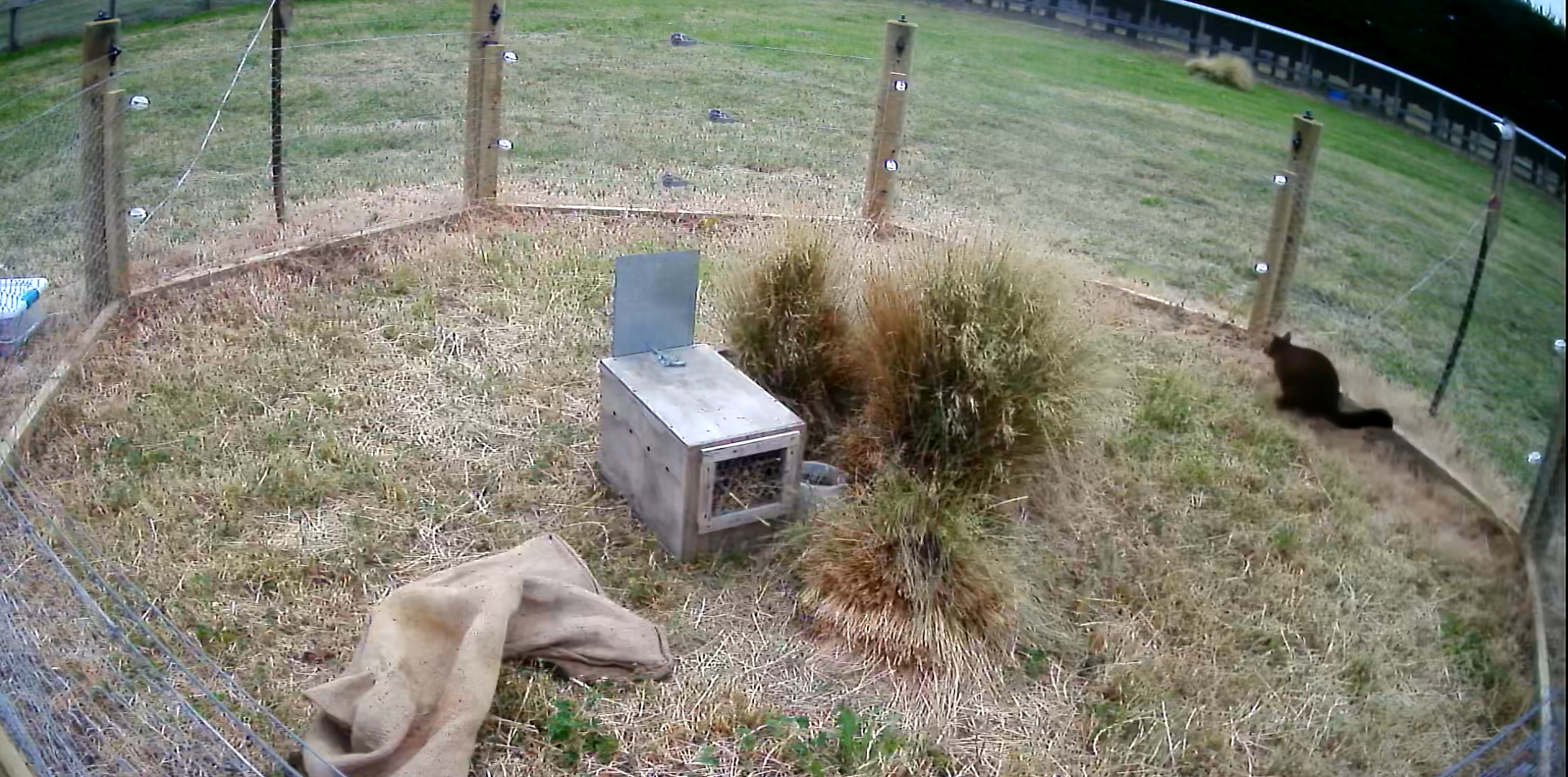Background
ZIP has been providing technical support and advice to our friends at Predator Free Dunedin and Otago Peninsula Biodiversity Group (OPBG), who are working to eradicate possums from the 9,500 ha Otago Peninsula.
In 2019, we visited the project site, and were shown a modified electric farm fence developed by a Trustee of OPBG to slow possum migration across rural farmland. Based on anecdotal success, we decided to carry out further testing of the fence as a possum barrier, at our predator behaviour facility in Lincoln.
What we did
We adapted the original fence design, a 900 mm high wire-mesh fence fitted with three single hotwires, into an octagonal testing pen inside the 2 ha enclosure at our predator behaviour facility.
We tested the fence against a total of 16 wild-caught possums—8 female and 8 male. Each possum was released into the pen overnight and their interactions with the fence were monitored by continually recording video cameras.
Results
Overall, the pen contained 62.5% of individuals (10/16). Male possums were more likely to escape the pen (62.5% escape, 5/8 individuals) than their female counterparts (12.5% escape, 1/8 individuals). The most common mode of escape was termed ‘jump and climb’. A possum, having previously encountered the lower hotwire, would jump past the first hotwire onto the mesh, then climb over or under the mid and upper hotwires. A disparity in initial jump height between male and female possums may help to explain the sex bias observed in this trial.
Conclusion & discussion
Despite the high overall escape rate in these trials, this low-cost fence may offer benefit to control operations as a means of slowing possum migration. The higher containment rate of females is promising as it suggests male-skewed invasion, which would limit the breeding potential of the population. Improvements to the fence design should aim at targeting these male individuals. Alterations that could be considered include raising the height of the mesh, or installing a fourth hotwire between the mid and upper hotwires.
It is also worth noting that placing an individual possum in a pen generates a very high motivation to escape, and therefore actual rates of migration across an electric fence may be lower than those we saw during this trial. Wild animals are likely to interact with a barrier fence over longer timescales, but may face lower motivation to cross when they do. In a landscape scale application, an exploratory shock may result in avoidance or edge following behaviour, which are not feasible for individuals within the confines of the trial pen. This may help to explain why some field applications of possum-specific electric fences report higher rates of efficacy than that observed in this trial (Cowan & Rhodes 1992).
Want to learn more? Check out Technical Report #11.

